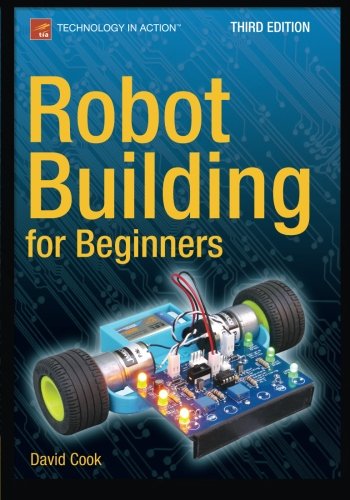

Most ebook files are in PDF format, so you can easily read them using various software such as Foxit Reader or directly on the Google Chrome browser.
Some ebook files are released by publishers in other formats such as .awz, .mobi, .epub, .fb2, etc. You may need to install specific software to read these formats on mobile/PC, such as Calibre.
Please read the tutorial at this link: https://ebookbell.com/faq
We offer FREE conversion to the popular formats you request; however, this may take some time. Therefore, right after payment, please email us, and we will try to provide the service as quickly as possible.
For some exceptional file formats or broken links (if any), please refrain from opening any disputes. Instead, email us first, and we will try to assist within a maximum of 6 hours.
EbookBell Team

5.0
90 reviews "I wrote this book because I love building robots. I want you to love building robots, too. It took me a while to learn about many of the tools and parts in amateur robotics. Perhaps by writing about my experiences, I can give you a head start."--David Cook Robot Building for Beginners, Third Edition provides basic, practical knowledge on getting started in amateur robotics. There is a mix of content: from serious reference tables and descriptions to personal stories and humorous bits. The robot described and built in this book is battery powered and about the size of a lunch box. It is autonomous; that is, it isn't remote controlled. The book is broken up into small chapters, suitable for bedtime (or bathroom) reading. The characteristics and purposes of each major component (resistor, transistor, wire, and motor) are described, followed by a hands-on experiment to demonstrate. Not only does this help the reader to understand a particular piece, but it also prepares them with processes to learn new parts on their own. An appendix offers an introduction to 3D printing and parts of the robot can, as an alternative, be "printed" using a 3D printer. The master project of the book is a simple, entertaining, line-following robot. Electronics and very light machining: This book is for adults who have dreamed of building robots since they were kids. This book is also for older kids who dream of building robots when they become adults. No background knowledge is necessary. Anyone with desire and intelligence should be comfortable with the tools, tricks, and parts to build. Because the hobby involves soldering, electricity, light machining, and some cash, the writing is targeted more towards individuals with those capabilities. Chapter 1. Welcome Robot Inventor! Chapter 2. Where to Obtain Tools and Parts Chapter 3. Safety Chapter 4. Digital Multimeter Chapter 5. Numbers and Units Chapter 6. Robot Line-Following Chapter 7. Nine-Volt Batteries Chapter 8. Clips and Test Leads Chapter 9. Resistors Chapter 10. LEDs Chapter 11. Power On! Chapter 12. Solderless Prototyping Chapter 13. Solderless Breadboard Setup Chapter 14. Variable Resistors Chapter 15. Comparator Chapter 16. Transistor Switches Chapter 17. DC Motors Chapter 18. Adding Gearhead Motors Chapter 19. Wheels Chapter 20. Coupler Chapter 21. Soldering Equipment Chapter 22. Soldering and Connecting Chapter 23. The Motherboard Chapter 24. Body Building Chapter 25. Launching the Line-Follower Chapter 26. Smoother, Smaller, Cheaper Chapter 27. Encore Appendix A: Leftovers Appendix B: 3D Printing
Who this book is for